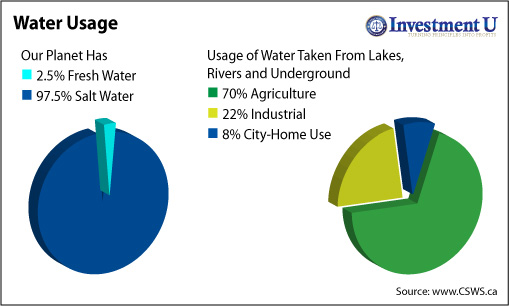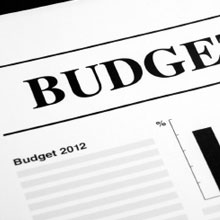Resource investing is a bit like the world of fashion.
The latest ‘hot commodity’ trend changes quicker than you can say ‘mullet’.
Of course there are evergreen commodities, like coal, iron ore and copper, which never go out of style.
They are mainstays. You can be sure coal stocks will look good for the next few years. Just like a good pair of jeans … as long as that ‘waistband doesn’t shrink’.
And just as in fashion, there are those commodities that become hot property overnight.
There is usually a reason why this happens. For example, China putting the brakes on ‘rare earths‘ exports, or Russian palladium stockpiles running out, and putting the media spotlight on that commodity. Or maybe there’s a novelty factor that gives the story some pizzazz, which helps tip the idea into the mainstream. Like lithium for example.
I’m not saying there’s no investment case for rare earths, palladium, or lithium. Far from it. In fact, palladium looks like it could be a great trade this year.
The problem is when the market gets carried away with the idea of a ‘hot commodity‘, the stock prices run too far.
Of course, you can trade these movements. And very profitably too.
The trick is to get in at the start – before a commodity becomes ‘hot’ – and then to try to get out at the top. This is easier said than done.
Take rare earths. This was probably the ‘hot commodity’ of 2009 when China started limiting exports. The investment case was that any company outside China with rare earths stood to make good money, as China’s limited exports pushed rare earth prices up.
The share price of one of the best rare earths stocks, Lynas (ASX:LYC), increased five-fold from $0.50 to $2.50 between April 2010 and April 2011. Great work if you sold at the top.
But a year later Lynas has fallen from $2.50 to almost $1.00.
There are two ingredients to the emergence in the new ‘hot commodity’.
One, the story – the thing that gives people a reason to invest – which we’ve just talked about.
The second thing you need is investors to be bullish.
Which is why when the markets turned up after Christmas, the first contender for Hot Commodity of 2012 emerged…
Graphite – the Commodity of 2012?
Graphite has the requisite wow factor.
Demand is strong. Forget pencils and squash racquets. A third of it is used to make equipment, like crucibles for foundries. Industry also uses it increasingly in pebble-bed nuclear reactors, and fuel cells.
Demand is also rising thanks to an increasing demand from the production of lithium ion batteries. These batteries bizarrely contain more graphite than anything else, including lithium. Less than 10% of the world’s graphite production goes to lithium ion batteries. Demand from battery producers is increasing rapidly, and should be half of global use by the end of this decade.
An exciting graphite polymer, ‘graphene’, seems to have some unique properties that the electronics industry is getting hot under the collar about. It’s still early days, but graphene demand may increase demand in the future.
The result is the price of pure graphite has now tripled in 10 years. Unless China starts increasing production and exports, the price will keep rising.
In total, the graphite industry produced about 1.3 million tonnes of the stuff last year. At current prices, this makes it 10 times bigger than the rare earths market.
But analysts reckon global production will need to DOUBLE to at least 2.6 million tonnes by 2020. That will take a lot of new graphite mines, so there should be an investment opportunity here.
In terms of production, much like rare earths, China is in control. And graphite has come to the market’s attention now China is reducing production and exports. Around 70% of the world’s graphite comes from China, so this is a problem. Other exporters like India, Brazil and Canada make up a small amount of the market and couldn’t compensate for anything but the smallest shortfall.
This is why the US and Europe put graphite on the critical elements list. The UK’s Royal Geological Society now ranks graphite just behind rare earths for supply risk.
The Investment Opportunity in Graphite
So graphite stocks have been taking off.
The Canadian stock market is the largest resource market in the world, so there is normally a bigger selection of stocks in each commodity. The story has been playing out on the Canadian market a bit longer than it has on the Aussie market.
The ‘Prospectors and Developers Association of Canada’ Mining conference, or ‘PDAC’ took place in Canada recently. 50,000 people turned up – that’s a huge conference by any measure. Everyone I spoke to that went said ‘graphite’ was the buzzword.
No wonder the market is now paying attention. Stock prices of some graphite stocks are flying.
For example, Canadian graphite stock Focus Metals (CVE:FMS) is up 1163% in 18 months.
Canada has quite a few graphite stocks. Back in the 1980s, graphite prices were high and the Canadians started building dozens of graphite mines. China then flooded the market with graphite in the 1990s to suppress prices. So the Canadians mothballed these mines. Now high prices are back, these mines are coming back to life!
Another Canadian stock, Energizer Resources (TSE:EGZ) has gained 157.1% in just three months. This stock’s main project is based off the East Coast of Africa, on the island of Madagascar.
Could good Australian market graphite stocks take off like the Canadians?
We are a bit behind the Canadians, but the sector is warming up quickly, with a few stocks doubling or tripling already this year. This is something I’m keeping a close eye on.
What to Look For When Investing in Graphite Stocks
When a ‘hot commodity’ takes off, all the stocks tend to go up with it.
But to pick the ones that will go the distance, some research is needed. One thing to watch in the graphite market specifically is what type of graphite the company has.
Because there is graphite … and there is graphite.
Graphite comes as ‘flake’ or ‘vein’ types, which are the best quality. This is the graphite used for batteries and pebble-bed nuclear reactors, which sells for up to $3,000 / tonne. Then there is ‘amorphous’ graphite, a lower quality product, which sells for about $1,000 / tonne.
Probably the big risk to the graphite market is that China increases exports to pull prices down and kill the competition, as it did in the 1990s.
It is a risk, but there are two problems with this argument. First, most analysts reckon that graphite supply is so tight now, that new demand from new applications would easily soak up any new supply.
Secondly, China’s graphite is mostly the ‘amorphous’ type, and this is no good for the new applications driving demand growth.
So the case for graphite looks solid.
And the story has only been rolling in earnest in the Aussie market since January. Looking at the length of the initial bull-run in stocks for other ‘hot commodities’, graphite stocks could have at least a year or more of gains ahead of them yet.
Dr. Alex Cowie
Editor, Diggers & Drillers
Related Articles
The Conference of the Year “After America” DVD
The Star Stocks of the Resource Sector
Higher Oil Prices – Government Guaranteed
Graphite: Is This the Hottest Commodity on the Aussie Market Right Now?
![Lynas Corp [ASX:LYC] Rocketed up five-fold In 12 Months](http://www.moneymorning.com.au/images/mm20120403a_sml.jpg)



 Tradervox (Dublin) – The pressure on the single currency was evident during the US session as it plunged below the 1.3300 levels to print a fresh low of 1.3277. It has come above the 1.3300 levels and is trading around 1.3310, down about 0.38% for the day. The support may be seen at 1.3280 and below at 1.3230.
Tradervox (Dublin) – The pressure on the single currency was evident during the US session as it plunged below the 1.3300 levels to print a fresh low of 1.3277. It has come above the 1.3300 levels and is trading around 1.3310, down about 0.38% for the day. The support may be seen at 1.3280 and below at 1.3230.


